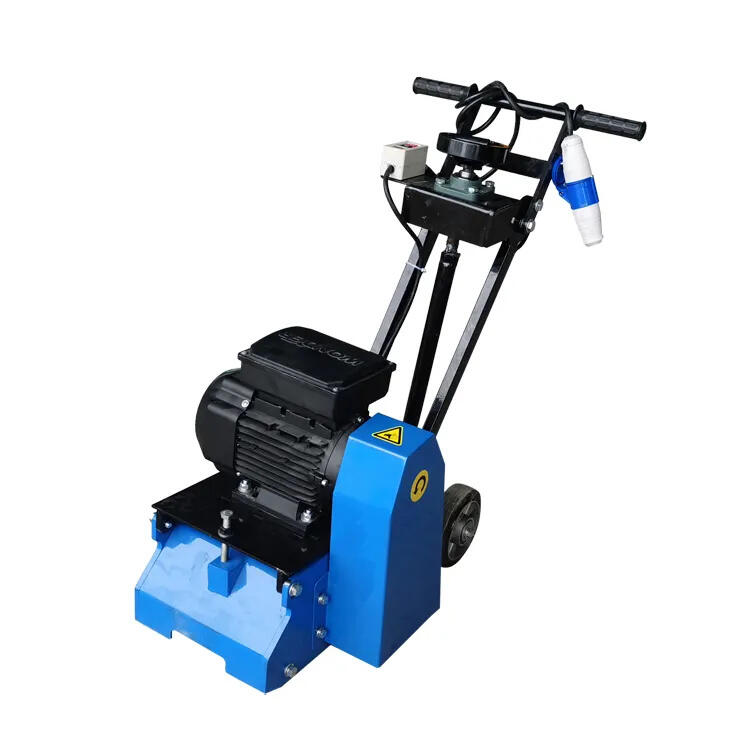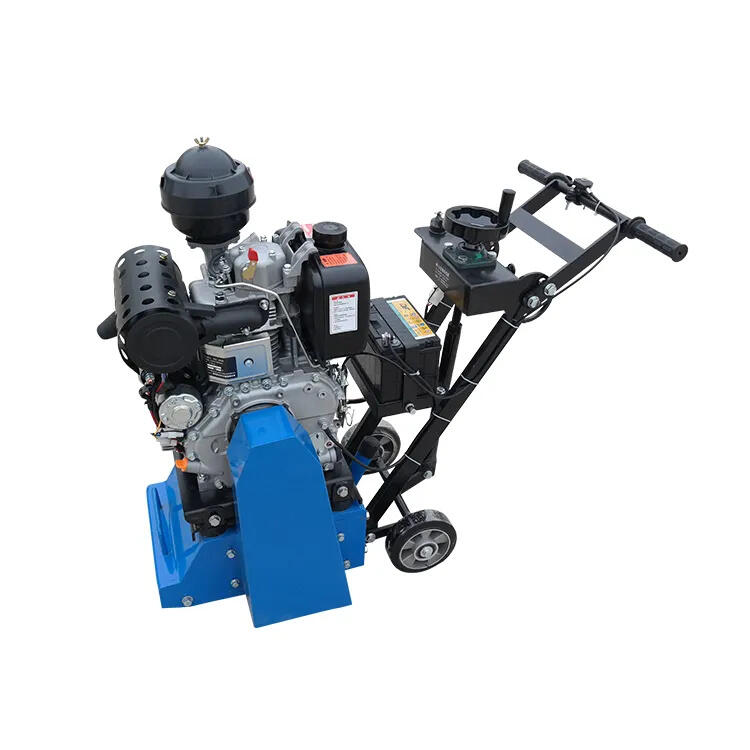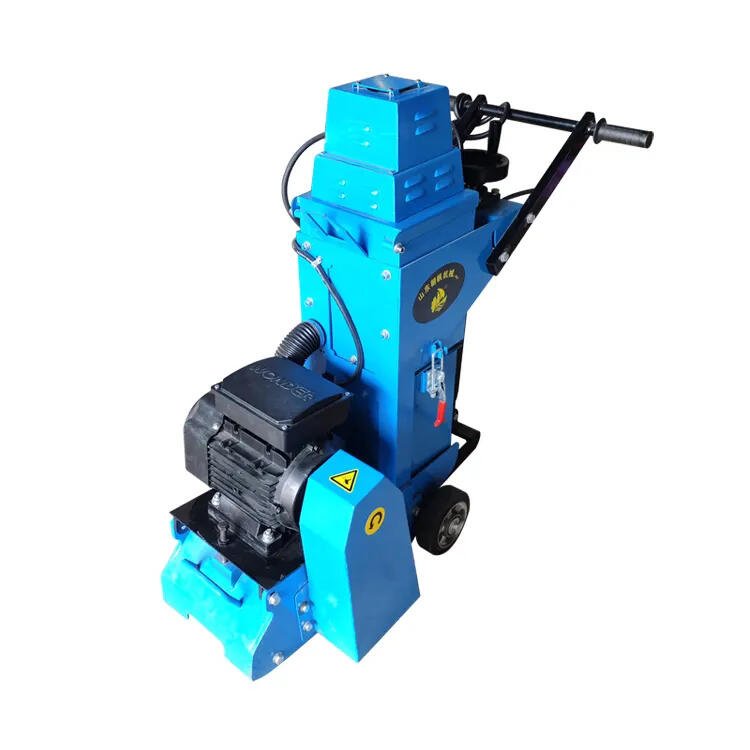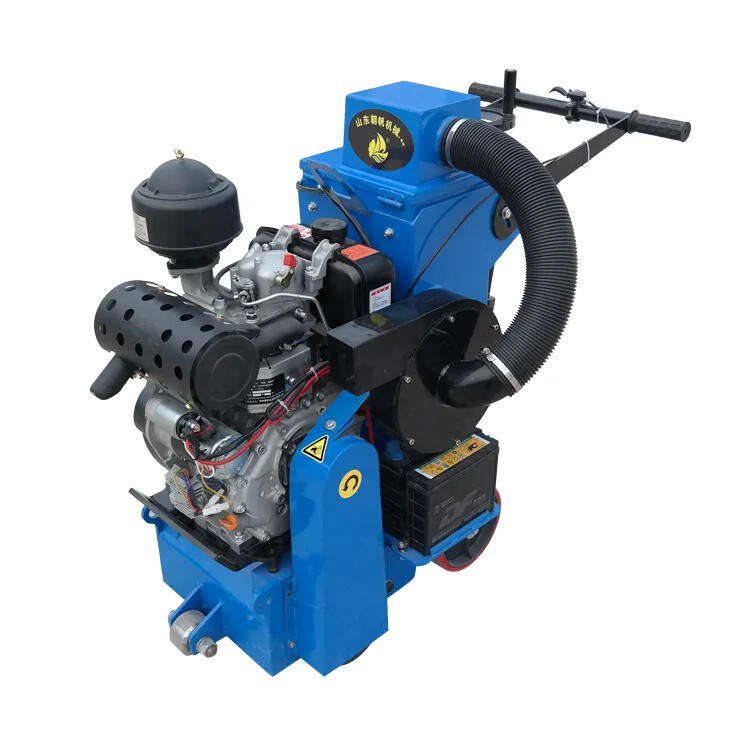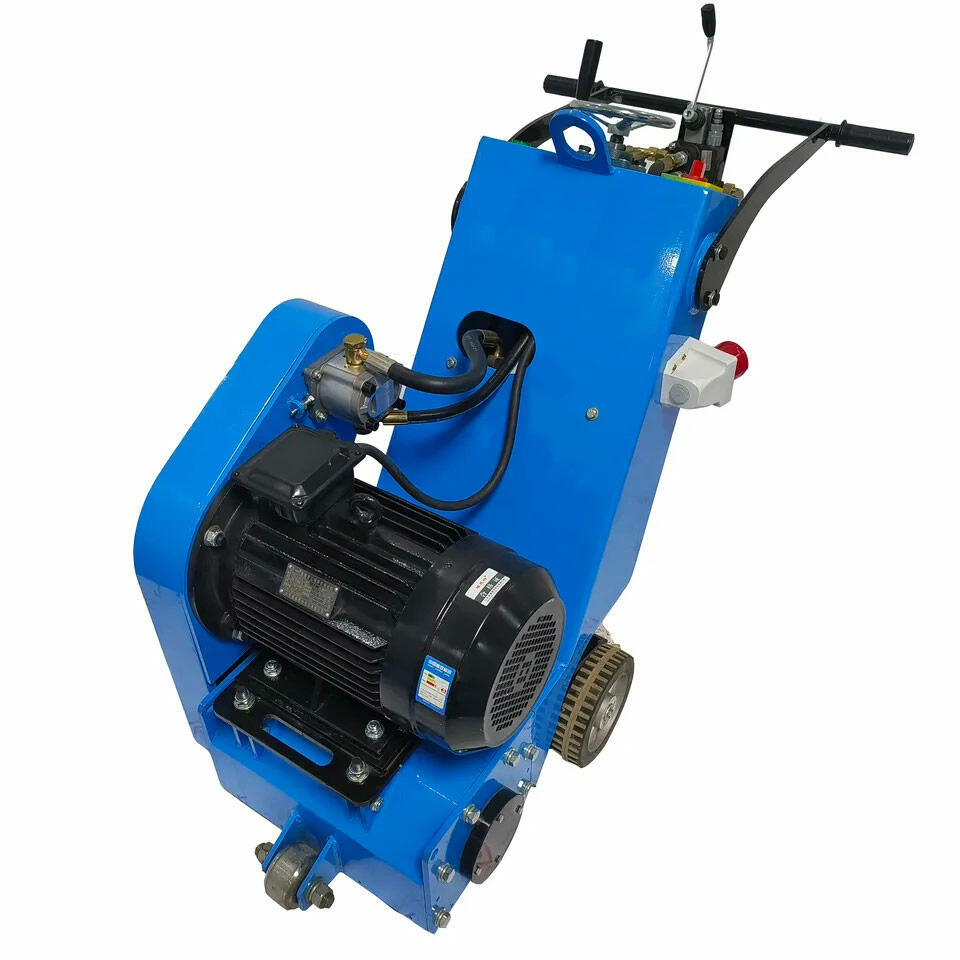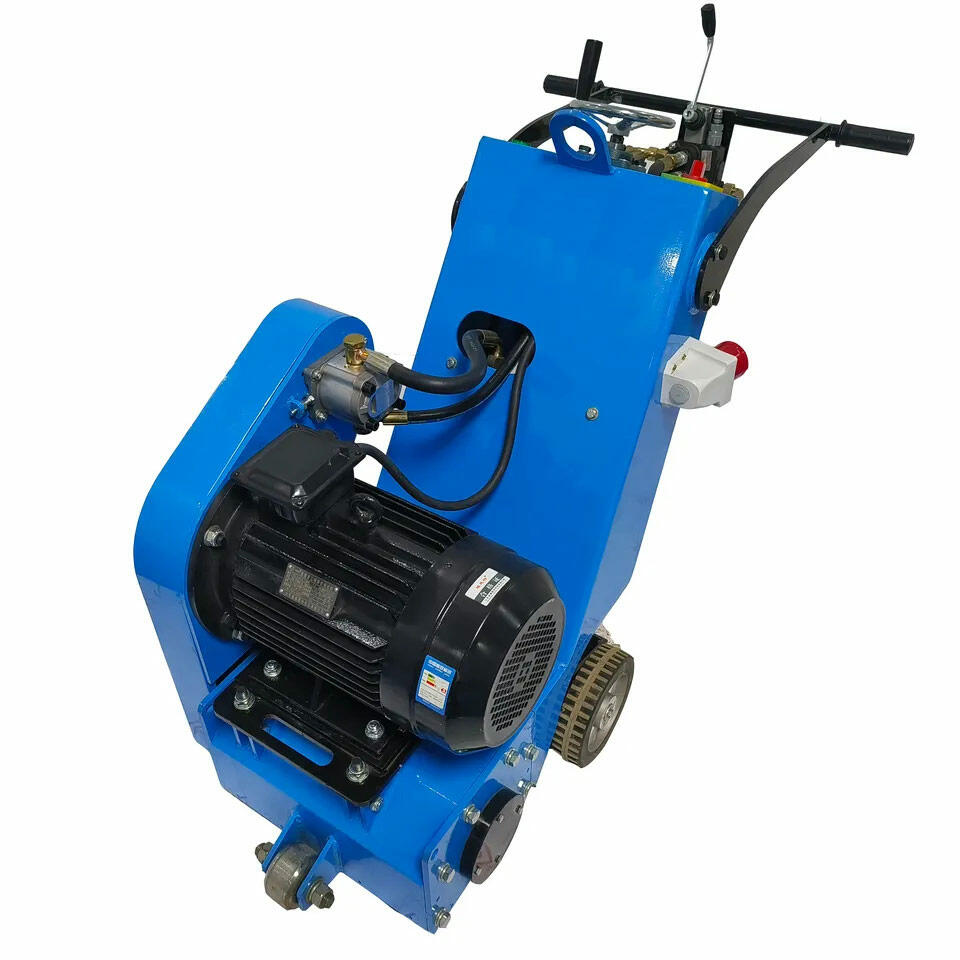Are you finding challenges with rough or uneven concrete surfaces during your concrete floor renovation projects?
Look no further, as a concrete scarifier is an ideal solution to address these issues effortlessly. By effectively breaking up hard concrete surfaces and precisely leveling and texturing the concrete, this equipment will prove indispensable in your endeavors.
If you’re curious about this incredible tool, we’re here to provide you with an in-depth understanding of what a concrete scarifier is, its applications, and step-by-step instructions on how to use it. Get ready to revolutionize your concrete renovations with this remarkable device!
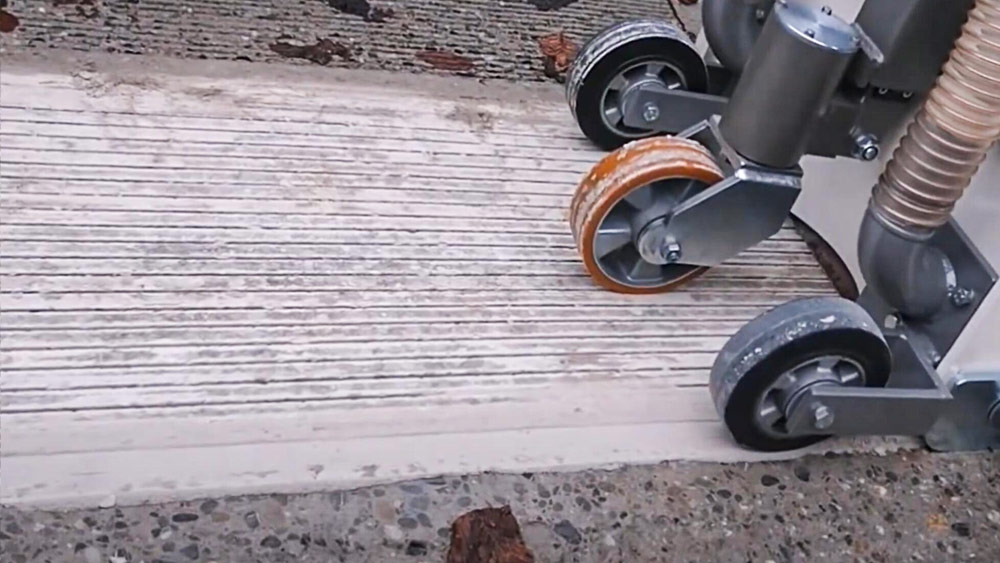
What is a Concrete Scarifier?
A concrete scarifier, also called a planer or milling machine, is a handy construction tool used to take off a layer of concrete from a surface. It’s like giving the surface a makeover – it can make it rougher, get rid of coatings, or fix old and worn-out concrete. How does it do this? Well, it uses tough tungsten carbide cutting wheels that spin around on a drum and gently break off the concrete.
Now, what makes the concrete scarifier special? It’s not just about grinding the concrete like some other tools. It’s more like a surface digger – it digs into the surface and gives it a bumpy or rough texture. This machine is no pushover; it’s tough and can handle even tough jobs. Plus, you can adjust how deep it cuts. That means it can take away quite a few millimeters of concrete in just one go, making it a tougher approach compared to other methods when it comes to getting a surface ready.
Concrete Scarifier Vs Concrete Grinder
The concrete grinder can be used to repair concrete that is not severely damaged on the surface. The surface repaired with this machine is smooth and does not require any further treatment to achieve the desired result. For more severely damaged concrete surfaces, the concrete planer is more efficient (single milling depth up to 5 mm), but the surface is rough and requires further treatment to achieve the desired result.
How To Choose Between A Concrete Scarifier And Grinder?
The concrete scarifier’s greater milling effort makes it a better choice for heavy-duty concrete surface preparation applications. Use them for high-production tasks where speed is critical.
Concrete grinder mills less aggressively than the concrete scarifier, making it a better choice for jobs that require high precision and less force. Typical examples of grinder applications include breaking up grease deposits, removing industrial contaminants and polishing concrete surfaces containing fine grit. They are also ideal for removing surface imperfections such as uneven marks and various graffiti.
When to Use a Concrete Scarifier?
Figuring out whether and when to use a concrete scarifier is all about matching the job with the outcome you’re aiming for. In simple terms, you’d turn to a concrete scarifier when you need to either remove a thick layer of concrete or give a surface a seriously bumpy texture.
Concrete scarifiers are particularly handy when you have to:
- Get rid of thick layers of epoxy coatings, asphalt, or concrete overlays.
- Fix uneven sidewalks to make them safer for people to walk on.
- Prep an existing concrete surface so it’s ready for a new screeding or coating by giving it a rough texture.
- Thoroughly rub down a concrete surface before adding a new layer, kind of like getting it ready for a good bond.
- Tear out big sections of sidewalks, roads, or patios right down to the base.
Depending on the kind of concrete scarifier you’ve got, you can adjust how much concrete it takes off in one go. It can range from just a millimeter to a whopping 20 millimeters! For smaller projects, you can go with a smaller scarifier machine.
Do You Need A Quality Concrete Scarifier?
Hiking Machinery Sales High Quality Concrete Scarufier. Welcome To Your Inquiry!
How to Efficiently Use a Concrete Scarifier
In the realm of surface preparation and concrete restoration, a concrete scarifier proudly takes its place as an indispensable tool. Unlocking the full potential of a concrete scarifier demands a thoughtful approach, involving a series of steps and considerations that warrant careful attention.

Step 1: Getting the Hang of It
Before you jump into the project, take a moment to get to know the machine. Understand how to adjust the depth and handle the drum – that part that does the work. Don’t worry if it takes a little time to get the hang of it; learning is part of the process. What’s really important is to figure out how the material you’re working on behaves with the machine. This knowledge is like a secret tool that’ll help you get your job done the smart way.
Step 2: Adjusting the Drum
Now, let’s talk about how deep the drum should go. The type of project you’re working on will be your guide. For instance, if you’re dealing with a thermoplastic line on an asphalt surface, you won’t need to go too deep. But when you’re working with heavy-duty stuff like thick layers of epoxy for big industrial jobs, you’ll want to let the drum plunge in deeper.
Here’s a tip: Be careful not to set the drum too close to the ground. If you do, the scarifier might end up bouncing around instead of doing a smooth job. And remember, when you start up, make sure the cutter isn’t touching the surface right away – that’s a key move.
Step 3: Taking It Step by Step
Every project has its own needs when it comes to how much you need to take off the surface. If you’re dealing with more than 1/8 inch of stuff to remove, it’s a good idea to go in stages instead of trying to do it all at once. This way, you won’t put too much pressure on the machine, and you’ll keep everything safer and smoother. It’s like breaking down a big task into smaller, manageable parts – smart and safe.
Step 4: Finding the Right Speed and Path
When you’re at work with the machine, keep a pace that lets it do its job well. How fast you move depends on the machine itself – things like its size, weight, and power – as well as how tough the material is. Going too fast might make it hard to control and even lessen how deep it can cut. So, it’s a good idea to keep a steady pace to keep everything in check. Also, make sure the machine stays on track and doesn’t wander off.
If the surface you’re working on isn’t all level, here’s a trick: try moving the machine in two directions. This can help even things out and give you a more uniform result. It’s like mowing your lawn from different angles to get an even cut.
Step 5: Fine-Tuning the Cutting Setup
Think of the scarifier’s cutting assembly as the heart of the machine. The little flails on the drum’s shaft should move around easily. If they’re too close together, you might need to take out a spacer to give them some breathing room. You can also play around with how the flails are set up and how much space is between them to create different textures on the surface.
Don’t forget about taking good care of the scarifier. Just like how you’d look after your car, following the instructions in the manual for regular maintenance will help the machine work better and get more done. It’s like giving it a little spa day so it can keep doing its job at its best.
Step 6: Final Steps and Considerations
After scarifying the concrete, you might notice that the surface feels a bit bumpy. If you’re thinking about adding a coating to it, here’s a tip: before you do, use a concrete grinder to make the surface nice and smooth. This will help the coating stick better and give you a really polished finish. It’s like getting the canvas ready before you start painting – a little extra step for a fantastic result.
Additional Key Considerations for Successful Scarifying
In addition to these steps, there are a few other important things to keep in mind for a successful scarifying operation. Each scarifier has its own limit when it comes to how much concrete it can remove in one go. It’s important not to push the machine too hard, as this can affect how well it works and might even harm it.
Also, different jobs need different tools to work their best. Make sure to use the right tools for the job to get the best results. These tools, like TCT (tungsten carbide tipped) bits, beams, milling cutters, and wire brushes, all have their own special qualities that work better for certain tasks.
Lastly, choosing the right machine based on how big your project is really matters. If the machine doesn’t have enough power for what you’re doing, it will take longer to finish the job, and it might not last as long overall. It’s like picking the right vehicle for a road trip – you need one that can handle the distance and the terrain.
Conclusion
Get ready to dive deep into the world of concrete scarifiers – those tough construction machines that make surfaces ready by carefully scraping away layers of concrete. These versatile tools are real workhorses, making coatings disappear and giving old concrete a fresh lease on life. In this guide, we walk you through the best times to use them, how to make them work like a charm, and the must-do maintenance to keep them running smoothly. So, if you’re all about construction, pay close attention because these scarifiers are essential players, and they deserve your utmost care and attention.
